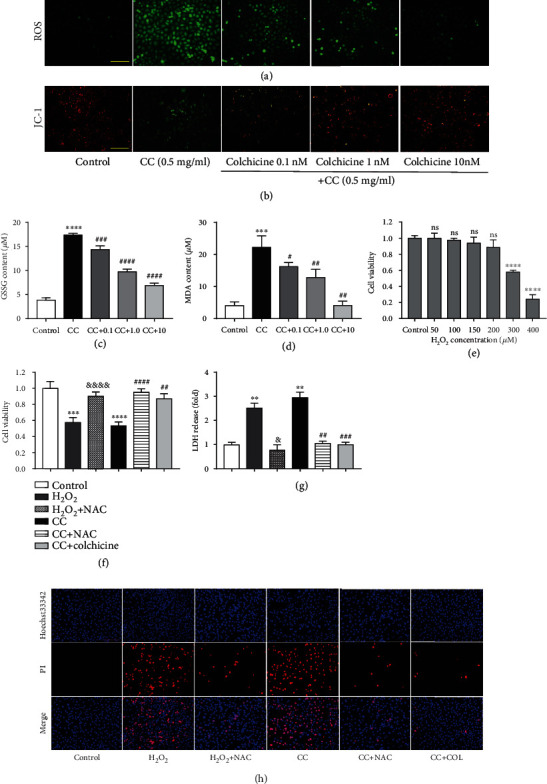Figure 3.

Colchicine plays an antipyroptosis role by inhibiting intracellular oxidative stress. HUVECs were treated for 10 or 24 h with different doses of colchicine (0–10 nM) in the presence of cholesterol crystal (0.5 mg/ml) or were left untreated (control). (a) Intracellular ROS level was detected using a DCFH-DA probe. (b) JC-1 Staining Kit was used for the detection of mitochondrial membrane potential. (c, d) The indicators of oxidative stress GSSG and MDA were tested by assay kits in endothelial cells. Endothelial cells treated with increasing doses of H2O2 (0-400 μM); (e) the cell viability was detected using a CCK8 assay. HUVECs were subjected to H2O2 (300 μM), cholesterol crystal (0.5 mg/ml) and colchicine (10 nM), or N-acetyl-cysteine (NAC, 5 mM) for 24 hrs. (f) The cell viability was detected using a CCK8 assay. Pyroptotic cell death was evaluated with (g) LDH release and (h) Hoechst 33342/PI staining. Scale bars = 100 μm. Data was expressed as the mean ± SD of three separate experiments. ∗∗P < 0.01, ∗∗∗P < 0.001, and ∗∗∗∗P < 0.0001 vs. the control group. #P < 0.05, ##P < 0.01, ###P < 0.001, and ####P < 0.0001 vs. the cholesterol crystal group. &P < 0.05, &&&&P < 0.0001 vs. the H2O2 group.
